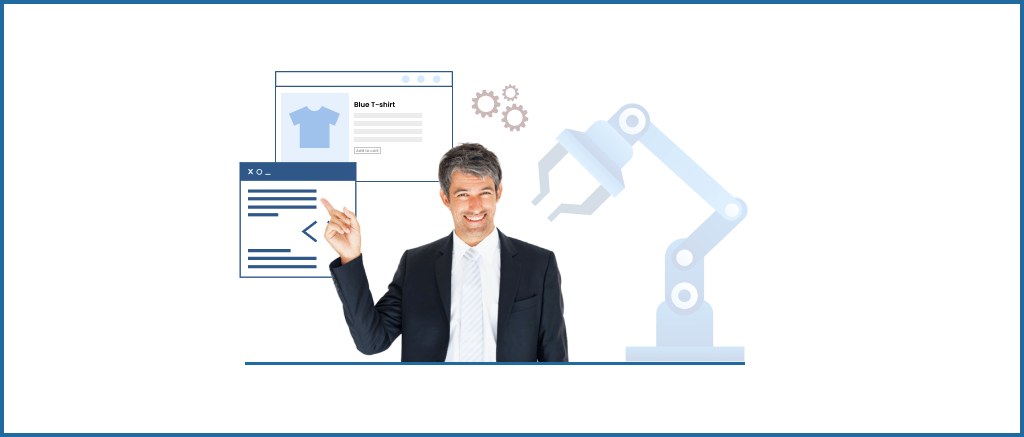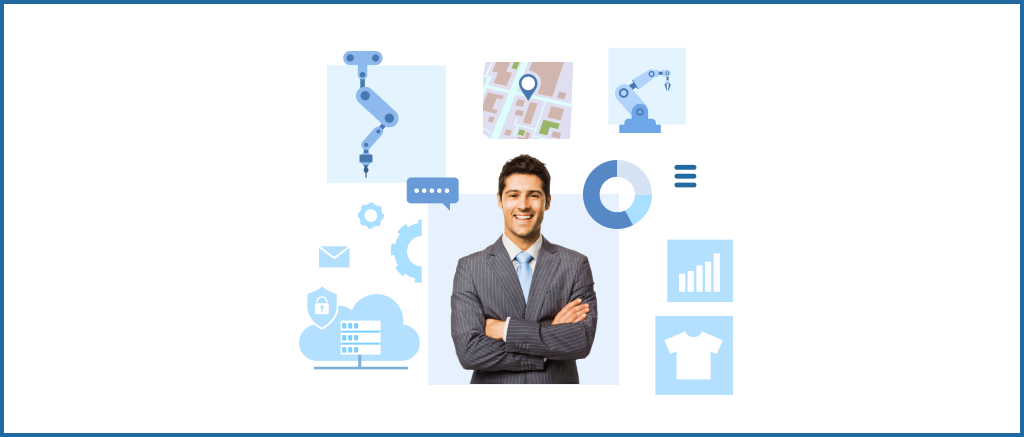May, 16 2022

In 2020 alone, 61% of businesses that explored automation exceeded their revenue targets.
Introducing automation into your eCommerce business can have a significantly positive ripple effect. Not only does an eCommerce automation solution reduce the amount of valuable time spent on repetitive tasks, but it also improves efficiency and your ability to gain more conversions.
If you’re having a hard time figuring out how to get started with automating your workflows, this guide will walk you through a 6-step approach to implementing an eCommerce automation solution in your business. The steps are

Every retailer has one primary goal – to attract leads to their online store and get them through checkout successfully. It's all about increasing sales and gaining more customers. That principal goal must be at the foundation of your workflow setup if you are looking to build a profitable eCommerce business.
But you have to get it right by setting clear business goals so you can block out all the noise and remain focused. Your eCommerce goals should be achievable and not over-ambitious. That's because realistic goals keep you motivated, so set concise goals that you can meet using your available resources.
You also want to come up with goals that have relevance to your overall vision. Your objectives should project your strengths while making up for the weaknesses in your business. In the end, aim for goals that position your business to provide a delightful experience for your customers and improve your bottom line.

After outlining your goals and objectives, the next step is to identify what key areas to introduce an eCommerce automation solution. An Asana survey found that employees are spending most of their time on work about work, which also takes up 62% of managerial workdays.
The best way to increase the time spent on intelligent work is to automate monotonous processes. Thankfully, your retail workflows are a combination of many individual processes which can be automated.
As a sort of guide, you want to find processes that are time-consuming, manually demanding, and repetitive. Such processes include:
These different parts of your business are eligible for automation. So take a bird’s-eye view of your business and analyze how it runs currently so you can point out any time-wasting, repetitive tasks slowing down your productivity. Then go ahead to find the right eCommerce automation software for each task.
If you’re wondering what aspects of your business to automate first, then read our educative guide on 6 key areas to leverage eCommerce automation software.

Now that you've identified what areas to automate, it's time to choose the right eCommerce automation solution. Finding the best-fitting one equipped with the necessary functionalities and features is no walk in the park. You will need to dedicate time to researching extensively and comparing different automation software.
For starters, here’s our roundup of the top 7 eCommerce automation tools in 2022.
Some things to look out for while analyzing and comparing eCommerce automation software include their strengths, downsides, backend handling, user-friendliness, cost, etc. You also want to see what other users have to say about the software, so don’t forget to check for client testimonials and case studies.

When planning your eCommerce infrastructure and workflows, always keep the bigger picture in mind. Think about how your processes will have to expand as the business expands. There will come a time when your sales team might have to spend so much time switching between repetitive tasks such as updating inventory, following up with shipping, managing orders, handling data logs in Excel, and more.
This is where eCommerce automation software can step in and handle the heavy lifting for your team. But not just any sort of automation tool will do. Focus on introducing software with real-time automation capabilities, that is, the ability to synchronize and transfer data in real time. This will help create a seamless customer service experience throughout your business.

Some retailers tend to bring new software into the business, get it running, and then forget that it even exists. Now that's a bad idea because you have so much valuable data moving within and across different systems in your eCommerce business.
Put in place a process for maintaining and checking the accuracy and quality of such data flows, as well as the level of security. You also want to have a regular schedule for testing and evaluating your automation tools to see if they are working effectively and helping your business in the right way. The right eCommerce automation solution will propel your business toward its goals.
If you notice that the results aren’t anywhere near key expectations, find out what the problem could be and ascertain whether it can be rectified or not. It's possible your team isn't using the software right or some tweaking might be required to get the software working optimally.

It's a total waste of time and resources trying to introduce the best eCommerce automation software without having a capable team in place to take advantage of such tools. So it makes sense to dedicate some resources to get your staff trained on how to use the tools effectively.
Having a network of software taking care of most parts of the business operations is awesome, but keep in mind that problems or hiccups could arise at any time. You need a team that can step up in such situations to manage things at the backend until your systems get back online.
All too often, we’ve seen retailers neglect this important area. They only learn to use the software themselves but fail to drill the entire team. In the long run, that could prove disastrous, so ensure your entire team gets the training needed to use the software from the start.
There’s never been as much innovation in the eCommerce industry as we’re witnessing today. It’s easier for shoppers to order stuff online and your competitors are investing in technology and tools to ensure that these customers keep buying from them, not you. So outpacing the competition is paramount if you must thrive in the retail space.
The only way to keep up and stay one step ahead is by automating your workflows. That’s how you improve efficiency and productivity. There are now different artificial intelligence tools and bots ready to take charge of manual, repetitive tasks with zero errors, so you can channel team efforts into more impactful work.
The end goal should be to give your shoppers the best customer experience imaginable. That’s something we are committed to at FenixCommerce.
We’ve built an unprecedented eCommerce automation solution that helps retailers enhance the on-site shipping and delivery experience for shoppers.
Need one-to-one assistance from a conversion expert to figure out where and how to automate your eCommerce site or Shopify store, then reach out to us at info@fenixcommerce.com.
How do you automate eCommerce?
Use this 6-step approach to implement an eCommerce automation solution in your business:
What should I automate first?
6 key areas of your business to implement an eCommerce automation software so you can scale faster and increase your topline are:
What should you not automate?
Some tasks have a low ROI and we believe there’s no real value in automating them. In general, focus on automation tasks that are valuable, highly repetitive, and voluminous when you scale your business.
Can I automate my Shopify store?
Yes, you can. Shopify provides a way for shop owners to automate their business using Shopify Flow. This solution helps you set up an automated workflow and connectivity across your store using a user-friendly builder. However, you can also hire developers to help you implement automation.

Author: Akhilesh Srivastava
Founder and CEO of FenixCommerce
